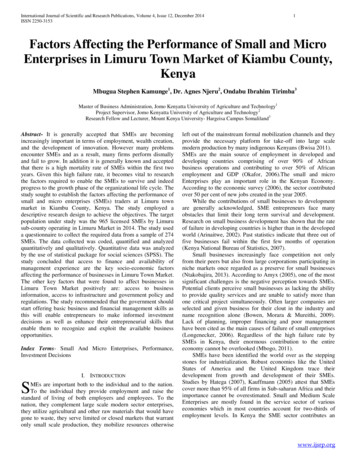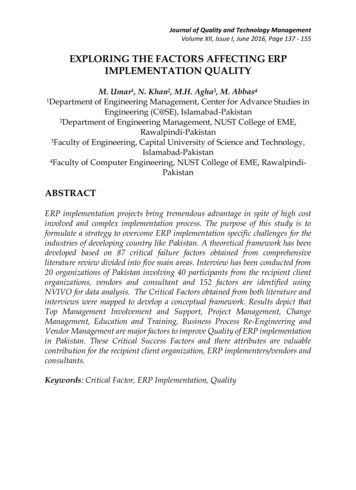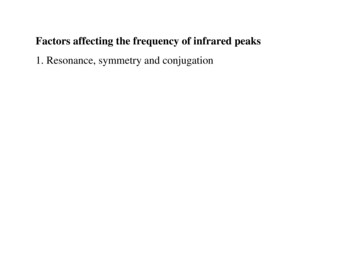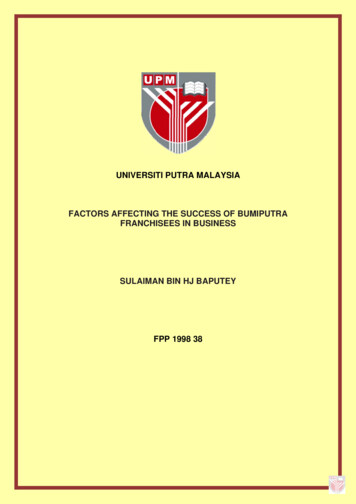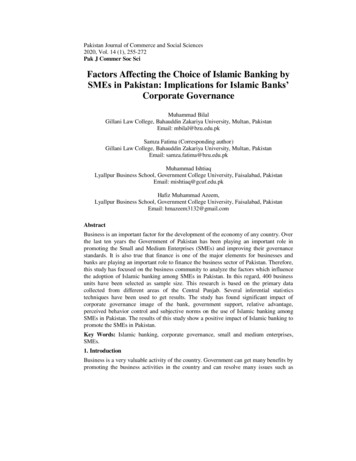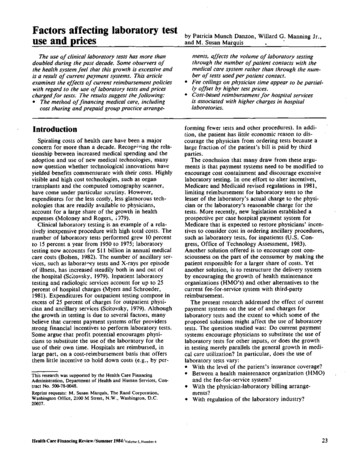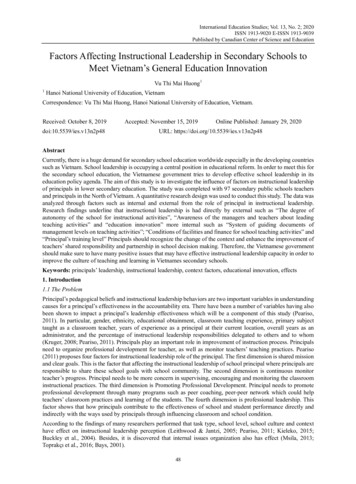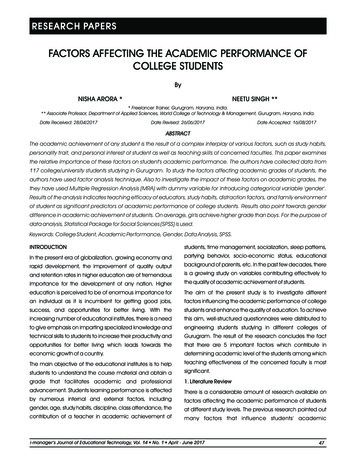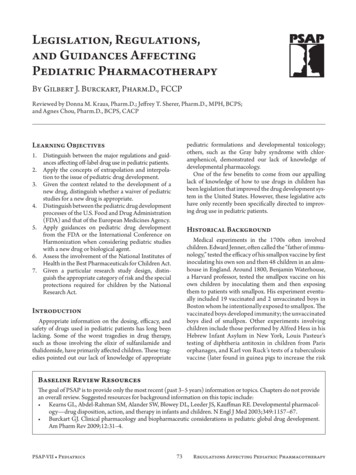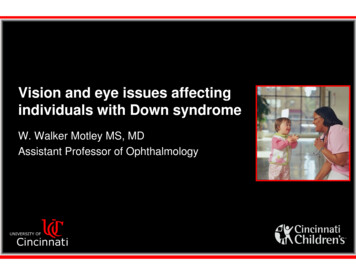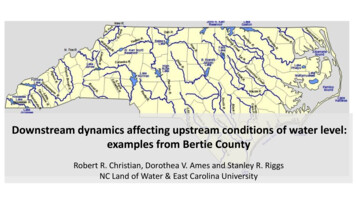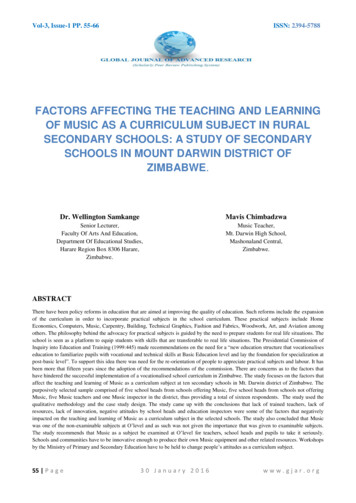
Transcription
Vol-3, Issue-1 PP. 55-66ISSN: 2394-5788FACTORS AFFECTING THE TEACHING AND LEARNINGOF MUSIC AS A CURRICULUM SUBJECT IN RURALSECONDARY SCHOOLS: A STUDY OF SECONDARYSCHOOLS IN MOUNT DARWIN DISTRICT OFZIMBABWE.Dr. Wellington SamkangeMavis ChimbadzwaSenior Lecturer,Faculty Of Arts And Education,Department Of Educational Studies,Harare Region Box 8306 Harare,Zimbabwe.Music Teacher,Mt. Darwin High School,Mashonaland Central,Zimbabwe.ABSTRACTThere have been policy reforms in education that are aimed at improving the quality of education. Such reforms include the expansionof the curriculum in order to incorporate practical subjects in the school curriculum. These practical subjects include HomeEconomics, Computers, Music, Carpentry, Building, Technical Graphics, Fashion and Fabrics, Woodwork, Art, and Aviation amongothers. The philosophy behind the advocacy for practical subjects is guided by the need to prepare students for real life situations. Theschool is seen as a platform to equip students with skills that are transferable to real life situations. The Presidential Commission ofInquiry into Education and Training (1999:445) made recommendations on the need for a “new education structure that vocationaliseseducation to familiarize pupils with vocational and technical skills at Basic Education level and lay the foundation for specialization atpost-basic level”. To support this idea there was need for the re-orientation of people to appreciate practical subjects and labour. It hasbeen more that fifteen years since the adoption of the recommendations of the commission. There are concerns as to the factors thathave hindered the successful implementation of a vocationalised school curriculum in Zimbabwe. The study focuses on the factors thataffect the teaching and learning of Music as a curriculum subject at ten secondary schools in Mt. Darwin district of Zimbabwe. Thepurposively selected sample comprised of five school heads from schools offering Music, five school heads from schools not offeringMusic, five Music teachers and one Music inspector in the district, thus providing a total of sixteen respondents. The study used thequalitative methodology and the case study design. The study came up with the conclusions that lack of trained teachers, lack ofresources, lack of innovation, negative attitudes by school heads and education inspectors were some of the factors that negativelyimpacted on the teaching and learning of Music as a curriculum subject in the selected schools. The study also concluded that Musicwas one of the non-examinable subjects at O‟level and as such was not given the importance that was given to examinable subjects.The study recommends that Music as a subject be examined at O‟level for teachers, school heads and pupils to take it seriously.Schools and communities have to be innovative enough to produce their own Music equipment and other related resources. Workshopsby the Ministry of Primary and Secondary Education have to be held to change people‟s attitudes as a curriculum subject.55 P a g e30 January 2016www.gjar.org
Vol-3, Issue-1 PP. 55-66ISSN: 2394-5788Key words: Teaching and Learning; Music; Curriculum; Practical; Vocational Education.1. INTRODUCTION AND BACKGROUND TO THE STUDYHistorically Music is believed to have started with the early man after developing the power of speech, imitating the sounds within theenvironment to express fear, anger, hunger and or satisfaction (Mugochi, 1988). Most scholars concur that religious people played asignificant role in the development of Music. Biblical stories about how King David wrote 150 psalms and the first book of Chroniclesshow us how Music was organized and how instruments accompanied the songs. This further demonstrates how Music played asignificant role in people‟s lives, religion being one of the key components of people‟s cultures and practices.Mugochi (1988) asserts that the Greeks with the likes of Pythagorus who lived in about 500 BC invented the writing of Music inpatterns called modes. The development of Music progressed to the point of today‟s notation. This is the system that was widely usedin churches and schools. It helps to train the voice without the help of an instrument on a completely unknown song or piece of Music.While we appreciate the role of the staff notation in modern music, not every form of music takes this mode. This is so when oneconsiders the different forms of Music found in different cultures. Nketia (1989) notes that Music of Africa was not recorded. It isMusic that was played for different purposes, which include ritual purposes, to convey a message such as bereavement in the family, anew arrival in the family and for entertainment purposes. It was very traditional and regarded as a very important media of a humanbeing from birth to death. Within that context, every type of Music is regarded as a transmitter of culture from one generation to theother.The Zimbabwe school curriculum at both primary and secondary school levels has provisions for at least two practical subjects thatschools have to teach. Music is one of the practical subjects that are expected to be taught at both primary and secondary school. Thesentiments expressed by the President of Zimbabwe when officially opening the Research Intellectual Expo in Harare in 2012demonstrate concern at the highest level about how practical subjects such as Music were being treated in schools. On 4 September2012, the President of the Republic of Zimbabwe, speaking at the Research Intellectual Expo at the University of Zimbabwe expressedconcern that practical subjects such as Music were not receiving fair attention like other curriculum subjects. In some cases someschools were not even offering Music as a curriculum subject. To demonstrate the importance of Music as a subject, a number ofTeacher Education Colleges offer Music as one of the major subjects that trainee teachers can specialize in. For example, the UnitedCollege of Education in Bulawayo has the Kwanengoma College of Music under its auspices. There is also the College of Music inHarare. At university level some now have Faculties or Departments of Music. Universities that offer Music as a degree programmeinclude Midlands State University, Great Zimbabwe among others. This therefore demonstrates commitment on the part of tertiaryinstitutions. These institutions have been producing Music teachers for some years now.2. STATEMENT OF THE PROBLEMThe Ministry of Primary and Secondary Education places importance on the teaching of Music as a curriculum subject. Of the 30secondary schools in Mount Darwin district, 25 are not teaching Music as a curriculum subject. The researcher undertook to findanswers to the following research question: „What are the factors affecting the teaching and learning of Music as a curriculum subjectin Mount Darwin secondary schools?‟3. PURPOSE OF THE STUDYThe purpose of the study was to investigate the factors affecting the teaching and learning of Music as a curriculum subject in MountDarwin secondary schools.3.1 Research sub-questionsTo find answers to the main research question, the study came up with the following five research sub-questions: How are schools implementing the policy guide lines on teaching and learning of Music?Are Music teachers available on the job market?Are the resource materials required in the teaching and learning of Music available in Mount Darwin secondary schools?Do Music teachers get effective supervision locally and externally?To what extent are staff development programs arranged for Music teachers locally and externally?56 P a g e30 January 2016www.gjar.org
Vol-3, Issue-1 PP. 55-66 ISSN: 2394-5788Why are some schools not offering Music as a curriculum subject?3.2 Significance of the studyThe study is important to the following stakeholders: Policy makers were to benefit by being informed of the extent to which Music is being taught as a curriculum subject in ruralsecondary schools.Policy makers were also to benefit by getting feedback on the challenges that were faced by schools in general and Musicteachers in particular in the teaching and learning of Music as a curriculum subject.The Curriculum Development Unit was to benefit by designing and dispatching to schools the relevant and adequate Musicinstructional materials to rural secondary schools.Officials in the National Manpower Planning and Development sector were to benefit by being shown the manpowerdeficiencies in the teaching of Music as a curriculum subject.Administrators, Music teachers and pupils were to benefit from the recommendations that would improve the teaching andlearning of Music as a curriculum subject.3.3 AssumptionsThe researchers had the following assumptions for schools that were offering Music as curriculum subjecting: They had Music as their curriculum subject on their master time tables.They kept a departmental file for Music.They had the Zimbabwe Junior Certificate and Ordinary Level Music syllabi.That the teaching and learning of Music at secondary schools in Mt. Darwin were not being taken seriously like othercurriculum subjects.3.4 LimitationsThe research was carried during the busy third term. The researchers did not cover a wider area due to limited time and resources.Funds were also a limiting factor, making it difficult for the researchers to visit every secondary school in Mt. Darwin district. Theabove mentioned limitations were overcome by the use of a manageable representative sample, through the use of the case studydesign.3.5 DelimitationsThe study focused on the factors affecting the teaching and learning of the theory and practice of Music as prescribed in the ZJC andO-Level syllabi of Zimbabwe. The study did not focus on the teaching and learning of Music in Mount Darwin primary schools andtertiary institutions. The focal district was Mount Darwin a rural district in Mashonaland Central Province. The district is located about156 kilometres to the north east of the capital city, Harare. The study focused on ten secondary schools in the Mt. Darwin educationdistrict, of which five offered Music as a curriculum subject and another five did not have Music as a curriculum subject.4. REVIEW OF RELATED LITERATURE4.1 The Policy GuidelinesEvery subject in the curriculum has a policy guideline and Music is no exception. Policy plays a very important role in curriculumimplementation as policy facilitates the translation of educational aims and objectives into behavioural courses of action. Policy givesdirection to the management and a guide for action. In addition policy reflects the ideological thinking of those in power. Thecountry‟s constitution forms a major parameter for the school policy since it determines the macro policy of the education system. Inline with government policy, secondary schools are expected to offer at least one practical subject.The Nziramasanga Commission(1999) also recommended that all students at secondary school level should do at least one Vocational Technical subject.The Curriculum developers also saw it vital to produce syllabi for all Vocational Technical subjects and Music being one of them.Principal Directors‟ Circular number 6 of 2010 on Institutionalisation of the Arts and Culture in the Education system cited thatschools should be actively involved in establishing Arts and Culture programmes in their schools. It went on to indicate that Arts andCulture are now big business worldwide. The researchers hence want to find out whether, the policy makers and educationalauthorities make some follow up to the implementation of the set policies.57 P a g e30 January 2016www.gjar.org
Vol-3, Issue-1 PP. 55-66ISSN: 2394-57884.2 Availability of Human ResourcesThe human resource component plays a crucial role in the implementation of programmes in any organisation. Teachers are animportant factor in the teaching and learning of any curriculum subject. In order for a teacher to teach a curriculum subject, theteacher should have knowledge of the subject matter and posses requisite skills and attitudes. Secondary school Music teachers shouldposses the knowledge and skills which are supported by the relevant equipment and materials to teach the different components ofMusic. These components of Music include Theory of Music, Music Appreciation and Practical Performance. In Zimbabwe, musicteachers get their professional training in Teacher‟s Colleges, Colleges of music and Universities. From these institutions they acquireknowledge on the relevant teaching and learning methodologies and develop the appropriate attitudes. Such training is expected tocontribute to high teacher effectiveness and high learner achievements. The Nziramasanga Commission (1999) noted that there wereinadequate specialized music teachers in schools.Apart from training and having the requisite skills, music teachers like all other teachers are expected to be conversant with thecultures of the pupils they are teaching. This comes with experience in the field of teaching. Chivore (1994) also cited teachingexperience as an important factor in the teaching and learning of any curriculum subject. Chivore (1994) further argues that there is apositive co-relationship between a teachers experience and a teacher‟s effectiveness in teaching and promotion of learning. Suchexperience on the part of the teacher is crucial in the interpretation of national syllabi, the use of effective methodologies in preparingpupils for examinations and developing study skills in pupils. Pupils are expected to gain significantly from teachers who are highlyskilled and experienced.4.3 Availability of Material Resources:4.3.1 TextbooksApart from the human resource component, there have to be material resources to support teaching and learning in the schools. Someof the material resources include textbooks and Music equipment. Textbooks are a factor that impacts on the teaching and learning ofany curriculum subject. The teacher pupil ratio in any subject does have a direct bearing on the quality of teaching and learning, just asthe book to pupil ratio impacts on the realisation of the teaching learning objectives. Textbooks play a very important role in theteaching and learning of Music as a subject. Pupils can read and revise work at the end of each unit and this increases theirunderstanding and response to examination questions. When textbooks are scare, music teachers are forced to unduly depend on thechalk and talk method. When textbooks are available, teachers can rely on other methods like group work, research, discussions anddebates.4.3.2 Projected teaching – learning technologyThe media used in teaching any subject is crucial. Shumbayaonda and Maringe (2000) noted that projected media refers to additionalteaching learning materials like video tapes, slides computers and projectors. In the teaching- learning of music these materials aremainly used during theory and appreciation lessons to enhance instruction. Pupils can learn, notation, types of dances or culturalpractices through playing video tapes. The teacher can also introduce any topic using slides to motivate and arouse the pupils‟ interestto learn.Computers are also a very useful media in the teaching-learning process. The computer has a lot of inbuilt features such as calculators,clocks, calendar, cameras video cameras and games to mention a few. Other features like DVDs, CDs, Flash discs, memory stickswhich used to load information into or out of the computer. Pupils can access the internet and make any research they wish to. Italso provides cross pollination of information and also it has a lot of resources and references in it. However, computers can haveadverse effects if not properly handled. They can be abused. They need electricity and can be difficult or expensive to repair.4.3.3 Non Projected MediaApart from projected media, there is also non projected media. Shumbayaonda (2000) refers to non-projected media as twodimensional aids which either tell their implications pictorially or with words. Examples of these are text books, flip charts, posters,maps and pictures. In the learning and teaching of music, musical instruments can be shown on charts or pictures. Dekeer (1994)concurs that the absence of quality of resources used in educational processes has a direct impact on the level of quality of pupilachievement. Lack of teaching-learning equipment affects both speed and quality of work produced.58 P a g e30 January 2016www.gjar.org
Vol-3, Issue-1 PP. 55-66ISSN: 2394-5788Teaching and learning become more effective because media enhance concept development, the abstract are brought to reality giventasks are completed on time and realisation of lesson objectives high. However some musical instruments require electricity tofunction. The research therefore is eager to find out how music classes operate without these instruments. She is also eager to find outwhether these instruments can be improvised.4.4 The Educational Value of the Teaching-Learning MediaThe provision of material resources enhance quality in education. Music being a practical subject requires musical instruments. Barker(1985) and Knock (1989) concurred that the provision of musical instruments motivates the learners. The instruments enable the pupilto engage all the senses. Such involvement makes the pupil an active participant in the learning process. As noted by Dewey (1979)the ideal learning set up is the one in which learners use most of their senses. This becomes a multi-sensory approach to educationwhich is promoted by the use of teaching and learning aids. The availability of teaching and learning aids promotes the use of suchmethodologies as the discovery which promotes pupil-centred learning. Barker (1985), and Kock (1989), both believed that theprovision of musical instruments facilitate conducive environment to impart skills, knowledge and attitudes of the learners. Thelearners are actively involved; they make discoveries on their own which will lead to them being future performers in music.Taruvinga and Moyo (2000) assert that non availability of instruments and other teaching-learning aids usually force teachers tounduly rely on the lecture method. They also went on to list the following educational values of teaching learning aids andinstruments. They noted that abstract concepts give more accurate impressions than verbal descriptions and they also shorten theteaching time as concepts are quickly mastered.4.4.1 TimeTime is an abstract resource that also affects the teaching and learning of music in secondary schools. According to the „O‟ levelmusic syllabus a class of music should have at least eight (35-40 minutes) lessons per week. Four of the lessons should be theory andthe remaining four should be practical. Wilkins (1984) notes the number of lessons outlined in policy documents like syllabi isimportant because it defines the teacher-pupil contact time. Wilkins also adds that, if contact time is less than the designated, it will bedifficult to attain a sense of achievement and progress. Student performance suffers as the syllabus is completed through crushprograms.These days in Zimbabwe secondary schools, too many subjects are competing for space in the Master Timetables. The researcher thenundertook to find out if music was being allocated as a curriculum subject, if so, was there eight lessons, per week as per policyguidelines.4.4.2 Class Sizes and their Effects on the Teaching and Learning of Music.Chivore (1992) and Wilkins (1984) agree that class size is a factor that affects teaching and learning. Wilkins (1984) says a class offorty pupils and above is too big. This applies to academic subjects but to a practical such as music a class of twenty pupils is thestandard one. Chivore (1992) asserts that a small class is usually easy to manage. Teachers can apply a wide variety of instructionalstrategies and learning activities. The teacher finds it difficult and exhausting to control. Learner achievements are usually low if theclass is too big. Wilkins (1984) adds that the learner achievements in small classes are usually very high. This is so because theteacher can attend to the peculiar needs of each and every learner. The researchers undertook to establish the class sizes for musicclasses in Mount Darwin secondary schools. The research also sought to find out factors that affect large teaching loads.4.4.3 The Importance of Music in the CommunityMusic serves different purposes in life. These range from entertainment to educative roles. Smith (1977) portrayed the idea that,educationalists should have a concern for pupils development. Music enhances enjoyment and personal development when pupilsexpress imaginations, feelings, beliefs and thoughts over a piece of music they have listened to. As such music plays an integral partin the life of an African. This means music is pivotal in human life of every African individual from birth to death, throughout one‟slife activities like farming, hunting, fishing, grinding, weddings, initiations and funerals. This is so since all these events arecharacterised by music that is related to the different occasions.59 P a g e30 January 2016www.gjar.org
Vol-3, Issue-1 PP. 55-66ISSN: 2394-5788Every society has its own culture. Culture involves all facets of society and it shows itself in many ways, for example the way peopledress, behave, eat, beliefs and norms and more importantly their technology, and music being one of them (Nketia, 1989). Music is avery important element of people. The type of music and dance, for example the Shangana people are known to be warriors and theirmusic is encompassed to vigorous feet stamping, call and answer style of singing and using, war props like the shields. Thereforemusic preserves culture and acts as a memory bank which operationalises culture.Shauraya (1989) asserts that music creates solidarity among people of different walks of life. It creates unity and cohesion, forexample. Bob Marley‟s One Love and Chimbetu‟s One Way tell people to get united, stop fighting and act towards the development ofnations. Music also acts as a medium of communication. It alerts people and informs them about disease outbreaks, how to preventoneself, and also the political status of a country. Messages like denouncing weird behaviour can also be passed through singing,especially most of the Sungura songs.Nketia (1989) propounds that music is sacred in the African Traditional Religion (ATR). It strongly represents the African heritage.In the African religion, music and dance are both functional and symbolic. They are sung for a purpose which may include spiritualappeasement, worship of ancestors, rain making, initiation, victory after wars and installation of Chiefs. The researcher thereforeseeks to find out whether the music teacher teaches (ATR) African traditional religion in their music appreciation.4.4.4 The Importance of Music in EducationThe Nziramasanga Commission Report (1999)‟s advocacy for the introduction of Music as a curriculum subject at secondary schoollevel was an innovation designed to give the pupils the opportunity to acquire skills necessary to create self employment, self relianceand sustenance. The Nziramasanga Commission (1999) further advocated for the restructuring of the curriculum to make it relevantto socio-economic realities. This development was very important to Zimbabwean youth as it was meant help the youth realise theimportance of practical subjects, such as Music. As noted by Dewey (1979) music makes it possible for a society to realise what itregards as desirable. He further notes that Music as a discipline has its proper place in the education system as it equips pupils inartistic speeches and organised sounds as well as developing their music talents.Music therefore opens up pupils‟ minds in many ways as they learn to think creatively. This creativity is promoted through thecomposition of songs. In that regard Music promotes imagination as pupils can solve problem quickly. They can solve problemsquickly through imagining various solutions. Music also teaches pupils to be empathetic, at the same time enhances team work anddiscipline. Music is also fun by its nature. Plating an instrument is fun and it brings self confidence and satisfaction. In that regardMusic contributes to the development of self- esteem and self- actualisation. Music therefore contributes to the development of theindividual. It touches the different tenets of development which are social development, emotional development, cognitivedevelopment, morale development and intellectual development among others. The relevance of music goes beyond the school system.It is also a form of employment. One can be self-employed in the music industry, at the same time employing others, thus creating aspill-over effect on the economy.4.4.5 Staff DevelopmentHowsan (1997) cited in Reinhartz (1989) views staff development as continuity of education for teachers to keep them up to date andexpanding the professional knowledge and skills throughout their career. Staff development in school has salient features whichinclude continuity, coping with change, improving competence and effectiveness, cross pollination of ideas as teachers exchangeviews, experiences, feelings pertaining to their teaching experiences and practice. Mount Darwin schools can incorporate this throughconducting workshops or inservice training of their Music teachers.Harris (1980) came up with a number of approaches. He classifies the first as personalized strategies and the second as Groupstrategies. In personalized approaches he mentioned clinical supervision whereby less experienced get assistance from an expert;independent study is when a teacher carry out studies or researchers or take other courses to upgrade self. There is also peersupervision where one asks a colleague on grey areas and then simulation and ganning.The group approaches included demonstration lesson whereby a group gather to witness a lesson and after it they point out and alsofind solutions for the weaknesses. Harris also mentioned coaching clinics as one of the group approaches whereby an expertise team60 P a g e30 January 2016www.gjar.org
Vol-3, Issue-1 PP. 55-66ISSN: 2394-5788imparts skills and knowledge to others. He also mentioned resource persons or subject specialists who came and develop a teacher bygiving detailed and comprehensive explanation towards a topic.The rationale is to keep teachers growing professionally in teaching and learning methodologies, instrument playing, fusion oftraditional and contemporary styles and also the use of computers in music education. The music teacher has to cope with changeswithin the subject matter and instructional media used in music. It may be fortunate to find school heads who provide constant staffdevelopment programmes to help teacher on their efforts to teach music. Nyagura and Reece (1988) provided interesting insights in acontrasting view maintaining that the majority of school heads had minimum subject knowledge or lacked skills to limit their ability tohelp teachers. The researcher was eager to assess the influence teachers had for staff development in the teaching and learning ofmusic. She was also eager to find out who provides staff development for music teaching.5. RESEARCH METHODOLOGY5.1 Mixed Research MethodologyThe researchers opted for mixed methodology. Mixed methodology brings both the quantitative and qualitative methods together.These methods complement each other as some of the research questions were structured while others were open-ended. As noted byWalliman (2005) both the qualitative and quantitative approaches provide an in-depth and wide view of the mixed methodology.Creswell (2007) propounds that conducting a mixed research stimulates the development of creative ways of collecting data making itrich. This method also helped in analysing grouped data with the intention of interpreting, clarifying, describing and validatingquantitative findings. The qualitative approach was used to answer questions on why human and material resources in Music are soscarce. This approach also helped in documentary analysis. The quantitative approach helped answer questions on demographic data5.2 Case Study designTo answer the research questions on what factors affecting the teaching and learning of Music as a curriculum subject at secondaryschool level, the researchers used the case study of ten selected schools out of 30 in Mt Darwin district, of which five offer Music as acurriculum subject and five which do not offer music as a curriculum subject. The use of this design, allowed the researchers to studyspecific cases such as the individuals, groups or such organizations as schools.Merriam (1988) defines a case study as an examination of specific phenomena, such as a program me, an event or process, a person ora social group. It can be noted that a case study offers more than an examination, as it is employed to gain an in-depth understandingof the situation and meaning for those involved. Yin (2003) further points out that, as a research design, a case study is used in manysituations to contribute to gaining knowledge which one wants to know, 'how' or 'why' an event is appearing like it is. This is alsosupported by Creswell (2007) who observes that there are a number of advantages for using a case study research design whichinclude its ability to allow ideas and hypotheses to emerge from careful and detailed observation; allowing for exploration ofsolutions for complex issues and the gaining of new knowledge and skills.5.3 The sample and sampling procedureThe sample was qualitatively selected. It comprised of ten secondary schools, ten secondary school heads, five music teachers, fiveother teachers who are not music teacher and one music inspector in Mt. Darwin distri
secondary schools in Mount Darwin district, 25 are not teaching Music as a curriculum subject. The researcher undertook to find answers to the following research question: „What are the factors affecting the teaching and learning of Music as a curriculum subjectFile Size: 451KB
